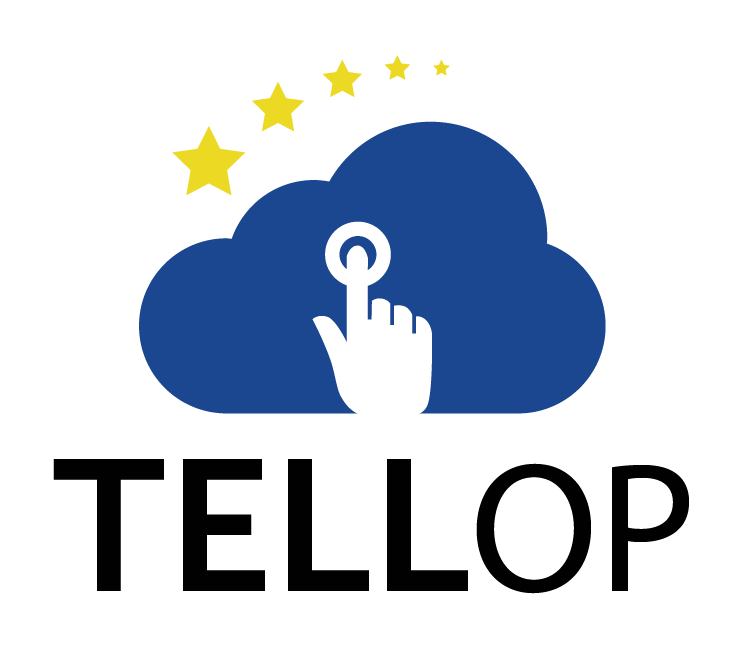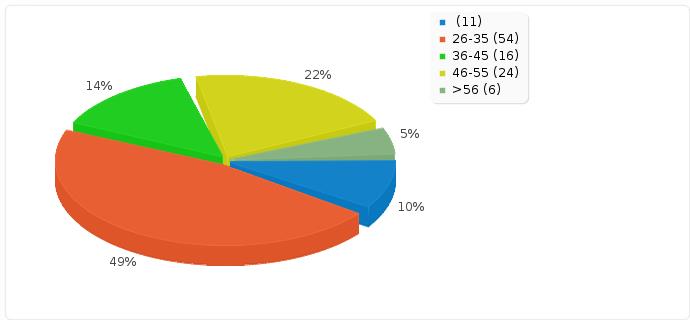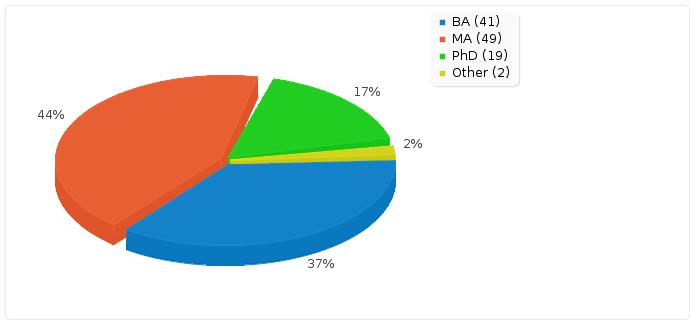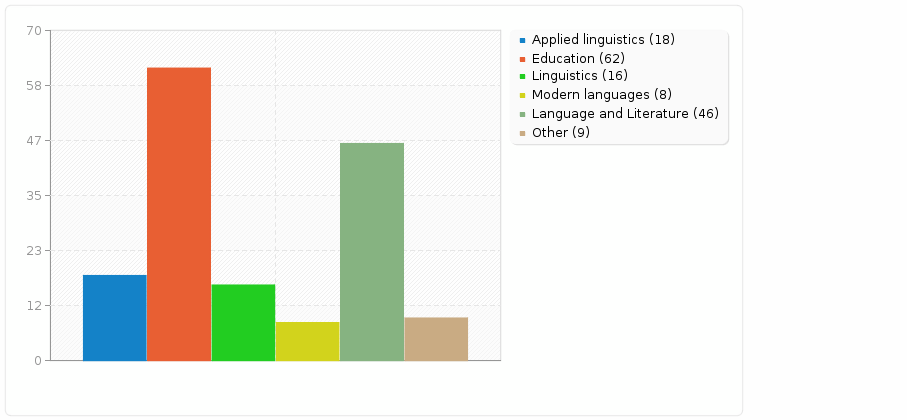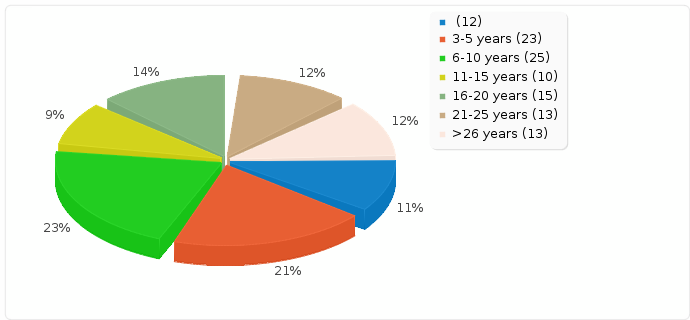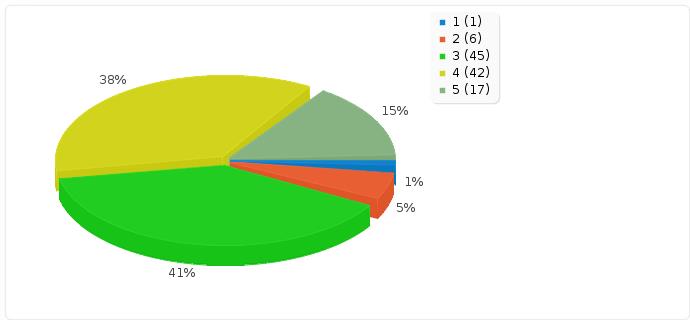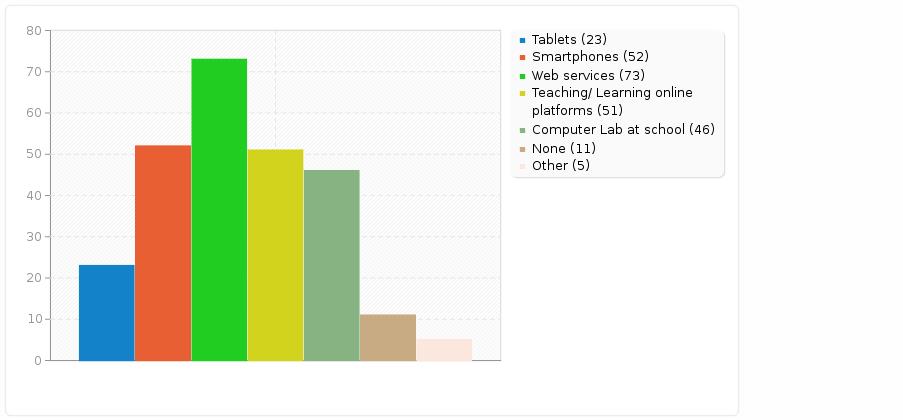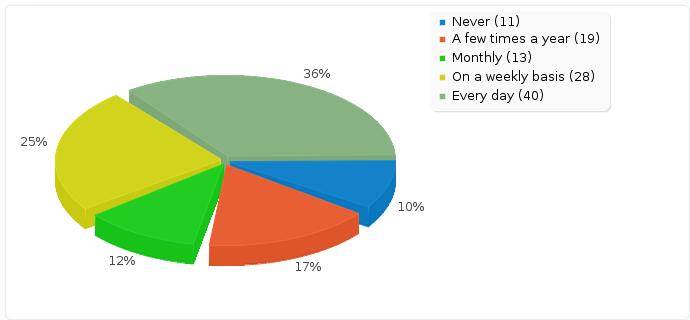Please quote this publication as follows:
Bulut, D., Dursun, B., and Ercan, I. 2015. A survey of existing OER resources in the field of language processing and their uptake: Turkey. URL: http://www.tellop.eu/survey-report-turkey/
1. Introduction
This section of Intellectual Output 8 reports the survey findings from the Turkish context. In total, 111 people from Turkey completed the survey, and this stands for 16.9% of the completed responses (690 in total) across five participating countries. Section A of the survey includes participant profile questions including their gender, age, level of education, previous training, years of experience, type of institution where they teach and the language they teach. Section B of the survey includes questions related to their knowledge/skills of technology and mobile devices, and institutional policies. Section C lists a number of Open Educational Resources (OER) and asks participants about their familiarity with these OERs and how frequently they use them. Out of 111 participants, 46 (41%) stated that they were not familiar with OERs at the beginning of Section C and thus were not asked to answer the subsequent questions of familiarity with and use of OERs.
2. Participant Profile
2.1. Gender
Out of 111 participants 60 were female (54%) and 51 were male (46%). This ratio shows that female teachers were more interested in participating in this kind of a study. We also compared the ratio of male and female participants who were not asked to answer Section C questions. We found that 26 (43%) of the female participants were not familiar with OERs while this number was 20 (39%) for the male participants. Based on this result, it can be contended that more male teachers are familiar with OERs in language teaching.
2.2. Age
Figure 1. Age distribution of participants
As can be seen in Figure 1., 49% of the participants were in 26-35 age group, and this was followed by 46-55 (22%), 36-45 (14%), <25 (10%) and >56 (5%), respectively. Teachers in the 26-35 age group were the most interested in the survey. We also compared teachers’ age groups with their familiarity with OERs, and the results showed that <25 and>56 groups were the most familiar (both 50%), and this was followed by 26-35 (43%), 36-45 and 46-55 groups (both 38%). Due to expected correlation between computer literacy and age, it is surprising to see that quite a few of the teachers from older age groups are familiar with OERs.
2.3. Level of Education
Figure 2. Educational background of participants
The highest number of participants were MA holders (49: 44%), and this was followed by BA (41: 37%) and PhD holders (19: 17%). While two participants chose ‘other’, only one of them wrote he had ‘postgraduate diploma’.
2.4. Previous Training Background
Figure 3. Previous training background of participants
Majority of the participants reported that they had their training in Education (62: 55.86%) while the next group was Language and Literature (46: 41.44%). This was followed by Applied Linguistics (18: 16.22%), Linguistics (16: 14.41%), Other (9: 8.11%) and Modern Languages (8: 7.21). Some of the participants chose more than one category for their training background because in order to become a language teacher in the Turkish context, those who study in programs other than English Language Teaching are required to attend a Language Teaching Certificate Program offered by universities. Also, the people who chose Modern Languages did not have their training in Turkey as such programs do not exist in the Turkish context.
2.5. Years of Experience in Language Teaching
Figure 4. Years of experience in language teaching
Out of 111, 12 (11%) participants had less than 3 years’ experience while 13 (12%) had more than 26 years’ experience. The rest of the participants fell between 3 and 25 years’ of experience. Within this range, 6-10 years group had the highest number of participants (25: 23%). Overall, no category had fewer than 10 participants, which can be claimed to be an acceptable distribution of participants for experience.
2.6. Institutional Background
Majority of the participants come from higher education institutions (94: 80%), and this was followed by the primary (8: 7%) and adult education teachers (7: 6%). Language instructors from 29 different universities participated in the survey. They work in different regions (from Istanbul to Hakkari) and at both state and foundation universities.
2.7. Languages Taught by the Teachers
Majority of the teachers (90: 81%) teach English as a Foreign Language, and 10 of them (10: 9%) chose English as a Second Language. When the Turkish context is defined for this distinction, they can be all considered as teaching English as a Foreign Language, which means that 90% of the participants are EFL teachers. The remaining 10% included German (3), Turkish (4), Spanish (2) and others (2).
3.Technology and Mobile Devices
3.1. Students’ Access to WI-FI at Institutions
Most of the institutions participants come from provide WI-FI access their students (83%). However, 15 participants coming from six different universities reported that their students did not have access to WI-FI. This shows that out of 29 universities 6 of them do not have WI-FI access for their students.
3.2. Institutional Support for the Use of Mobile Devices
Majority of the participants (57: 51%) chose ‘yes’ for their institutions’ policy to foster the use of mobile devices in their teaching. A closer look at the frequencies shows that out of 57, 49 participants teach at universities. When this number is compared to the total number of participants from the universities (94), it can be concluded that almost half of the participants are not encouraged by their institutions to use mobile devices in their teaching.
3.3. Training Background for the Use of Mobile Devices in Teaching
According to the results of the survey, out of 111 participants, 36 (32%) chose ‘yes’ for such a training in their professional background, and 18 of them (50%) teach at university level. All primary school teachers chose ‘yes’ for such a training because of the national project called ‘Fatih’ which aims to digitalize all pre-university education. The project has already been launched and is being piloted in certain regions of the country. In this project, students do not have books but are given tables with digital books already uploaded. Naturally, there is also a teacher training component of the project which aims to prepare teachers both for digital and mobile teaching.
3.4. Computer Skills of Teachers
Figure 5. Computer skills of the teachers
The survey included a question with a five-point Likert scale asking teachers to evaluate their own computer skills from 1 having ‘no skills’ to 5 being ‘an expert user’. Among the teachers only one person evaluated himself as having ‘no skills’ who is an EFL instructor at a state university. Majority of the people (87: 79%) evaluated their computer skills at 3 and 4 levels. Expert user category was chosen by 17 (15%) people. Age could be an important factor. Thus, when age categories were compared, it was noticed that 14 of these people were within the 26-35 age category.
3.5. Devices and the Frequency of their Use in Teaching by the Teachers
Figure 6. Devices used by teachers
The answers given by the participants show that web services are the most common among the devices they use in their teaching (73: 65.77%), and this is followed by smart phones (52: 46.85%), teaching/learning online platforms (51: 45.95%), computer labs at school (46: 41.44%), tablets (23: 20.72%) and other (5: 4.5%). The category ‘other’ included devices such as laptops, projectors and interactive books. Out of 111 participants, only 11 (9.91%) did not use any devices in their teaching. A closer look at their institutions showed that they were all language instructors at higher education institutions.
The next question related to devices asked the participants how often they used these devices in their teaching. The number of teachers who used them ‘ever day’ was 23 (21%); ‘on a weekly basis’ was chosen by 28 teachers (25%); ‘monthly’ was chosen by 14 (13%); ‘a few times a year’ was chosen by 21 (19%) participants; and 25 (23%) of the teachers chose ‘never’. It looks like teachers changed their minds from the previous question to this one or had different interpretations of these two questions because while 9.91% answered that they did not use any devices in the previous question, when they were asked about the frequency of use of these devices in their teaching, 23% of them answered that they never used them.
3.6. Teachers’ Assumption of How Frequently Students Use Mobile Devices in their Language Learning
Figure 7. Students’ use of mobile devices for language learning
The participants were asked about their assumptions of how frequently their students used mobile devices to learn languages, and the results show that they have a positive assumption that their students use mobile devices quite frequently: 40 (36%) of them think that their students use them every day; 28 (25%) think that they use them on a weekly basis; and 11 (10%) think that they never use them. A comparison between what they do and what they think their students do show that their students use mobile devices more frequently than the teachers themselves. However, Chi-square test results did not yield a significant difference between the observed and expected frequencies (p=.089).
4. Open Educational Resources (OERs)
4.1. Teachers’ Familiarity with OERs
In Section C of the Survey, the first question asked about teachers’ familiarity with OERs. While 34 of them (31%) answered that they were familiar with OERs, 46 of them (41%) said that they were not familiar with OERs at all. Also, 31 participants (28%) chose the second option and said they heard of but never used them.
4.2. Teachers’ Interest in Learning More about OERs
Even though quite a few of them were not familiar with OERs, majority of the participants were interested in learning more about them (87: 78%) while 6 of them (5%) chose ‘no’. A closer look at those who were not interested in learning more about OERs show that 5 of these participants work at universities and one at primary school, but there was no clear pattern in terms of their age and years of experience distribution.
4.3. Frequency of OER Use by Teachers in General and in the Context of Language Teaching
The number of the participants who were not familiar with OERs was 46 (41%) and they did not answer Section C questions (starting with these two) which required familiarity with and use of OERs. From now on, we report the findings based on answers from 65 teachers who participated in this survey. The first question asked about teachers’ use of OERs in general.
Table 1
Use of OERs in General and in the Context of Language Teaching by Teachers
| Frequency of Use | In General | In Language Teaching |
| Never | 20 (31%) | 21 (32%) |
| A few times a year | 12 (19%) | 16 (25%) |
| Monthly | 10 (15%) | 09 (14%) |
| On a weekly basis | 19 (29%) | 15 (23%) |
| Every day | 4 (06%) | 4 (06%) |
As can be seen Table 1, out of 65 teachers, 20 of them (31%) answered that they never use OERs, and this was followed by ‘on a weekly basis’ (19: 29%), ‘a few times a year’ (12: 19%), and ‘monthly’ (10: 15%). The number of teachers who used OERs ‘every day’ was 4 (06%). The second question under the same sub-section asked about teachers’ use of OERs in their teaching. Similar to their use of OERs in general, 21 of the teachers (32%) answered that they ‘never’ use OERs in their teaching, and again 4 of them chose ‘every day’. Even though teachers’ use of OERs in general and in teaching seem to have a similar pattern, Spearman Rank-order Correlation was not found to be significant at p<.05 level. This means that frequency of their OER use in their daily lives did not fully match with that in their teaching. Looking at the percentages it can be concluded that teachers used OERs more frequently in their daily lives than in their teaching.
4.4. Teachers’ Familiarity with and Use of OER Technologies in Language Teaching
Table 2
Teachers’ Familiarity with and Use of Certain OER Technologies in Language Teaching
| OER Technology | Familiarity score | Familiarity ranking | Use score | Use ranking |
| Online dictionaries | 293 | 1 | 269 | 1 |
| Online collocation dictionaries or databases | 217 | 2 | 191 | 2 |
| Language learning apps | 169 | 3 | 150 | 3 |
| Spell checkers | 169 | 4 | 128 | 5 |
| Text-to-speech technologies | 165 | 5 | 128 | 6 |
| Visual representation of word clusters | 163 | 6 | 137 | 4 |
| Automated word lists and frequency counts | 154 | 7 | 111 | 8 |
| L1 corpora | 151 | 8 | 119 | 7 |
| Specialized corpora | 129 | 9 | 107 | 9 |
| Wordnet | 128 | 10 | 100 | 11 |
| Learner corpora | 125 | 11 | 106 | 10 |
| Text density/readability index | 124 | 12 | 94 | 14 |
| Vocabulary profiling | 119 | 13 | 100 | 12 |
| Text summarization | 118 | 14 | 94 | 13 |
| Online corpus management tools | 115 | 15 | 93 | 15 |
| Automated Part of speech tagging | 109 | 16 | 86 | 17 |
| Lemmatizers | 107 | 17 | 89 | 16 |
| AVERAGE SCORE | 150 | 124 |
In order to find out which OER technologies the participants were familiar with and use in their teaching, frequency counts were converted to scores for each OER listed in the survey. This is done by using numerical values (never heard of it=1, heard of it but never used=2, sometimes use it=3, use it frequently=4, always use it=5), and multiplying their frequencies and adding them up for each OER. As can be seen in Table 2, the first three OERs teachers are the most familiar with include ‘online dictionaries’, ‘online collocation dictionaries or databases’ and ‘language learning apps’, which have the same rankings for their frequency of use. The three OERs the teachers are the least familiar with are ‘online corpus management tools’, ‘automated part of speech tagging’ and ‘lemmatizers’, and again they are the least frequently used three OERs by the teachers.
As can be expected, teachers’ familiarity levels were found to be higher for all the OERs than their frequency of use. While the average score for familiarity level was found to be 150, it was 124 for the frequency of use. However, Spearman Rank-order Correlation was found to be significant at p<.01 level between their familiarity and use rankings (rho=.98). That is, teachers’ familiarity level determines how frequently they use a certain OER.
4.5. Teachers’ Expectations from an OER Application that Makes Use of Language-processing Technologies
At the end of the survey, there was also an open-ended question asking participants about their expectations from an OER application that makes use of language-processing technologies. Out of 111 participants from Turkey, 47 answered this question. With a content analysis approach we categorized their expectations as follows:
App Use-related expectations:
– user friendly
– customizable
– downloadable and can be used without web access
– free
– training manuals/videos for teachers and students
– integration of teacher and student platforms
– a platform to communicate with other teachers and learners from other parts of the world
Language-related expectations:
– easy access to different types of corpora
– comprehensible authentic use of language
– parallel corpus options
Learning-related expectations:
– communicative activities
– skill-based approach
– vocabulary, pronunciation and grammar practice activities with instant feedback
– provide learning at one’s own speed
– learner management of the learning process
– learner progress report (for teachers and students)
5. Conclusion
Based on the Turkish part of the survey results, it can be contended that majority of the participants are not familiar or have never used OERs in their language teaching. However, again most of them definitely want to learn more about OERs and would like to use them in their profession. Also, the national policy to digitalize pre-university education will encourage both pre-university and university level teachers and students to benefit from OER technologies in their teaching and learning. In their expectations, they stated that they want such mobile apps to be user friendly, easily accessible and have clear instructional guidance. Interestingly, they expect such apps to provide a platform where they can communicate with other teachers and students.
